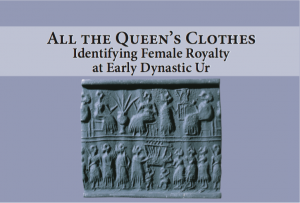
Cylinder seal impression from grave PG 1237 in the Ur Royal Cemetery showing seated banquet scene. Courtesy of the University of Pennsylvania Museum of Archaeology and Anthropology.
Near Eastern Archaeology 79:3 article, “All the Queen’s Clothes: Identifying Female Royalty at Early Dynastic Ur,” by Aubrey Baadsgaard, consultant scholar in the Near East Section of the University of Pennsylvania Museum of Archaeology and Anthropology and an Adjunct Assistant Professor in the Department of Anthropology at Gettysburg College.
In spite of widespread recognition of the burial of high-ranking individuals, including women, in the Early Dynastic Ur Royal Cemetery, ca. 2500 B.C.E., most of the details about the nature of their social position remain obscure. This article attempts to fill this gap by identifying the possible social roles of prominent females buried in the cemetery. A reconsideration of the evidence from three royal graves reveals how high-ranking females might have attained social and political prominence and asserted profound social influence, ultimately perhaps wielding power and prestige in their own right and acting as full participants in the building and institutionalization of increasingly complex social roles and institutions in Early Dynastic Mesopotamian society.